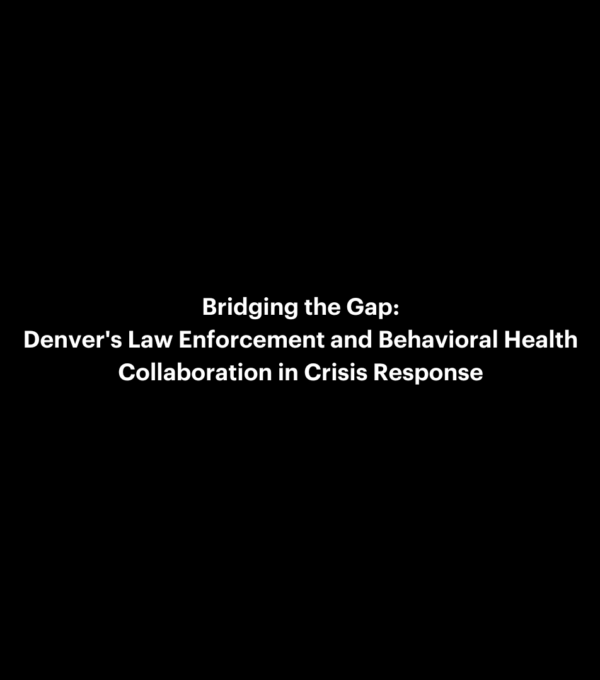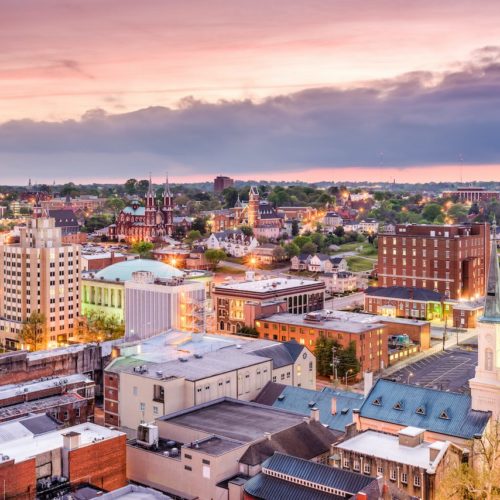988: A Shared Opportunity
988: A Shared Opportunity
On July 16, 2022, the U.S. transitioned to 988—a 3-digit code for people to reach the National Suicide & Crisis Lifeline. Since then, communities from Baltimore to Salt Lake City have been working with crisis responders alongside local law enforcement agencies as they move toward a comprehensive, coordinated crisis system. In its first two years of operation, 988 crisis counselors have responded to more than 10 million calls, texts, and chats from people seeking help for themselves or loved ones with suicidal thoughts, mental health concerns, or substance use-related crises. Additionally, nearly 98 percent of people who have reached out to 988 have been able to get the support they need over the phone without requiring a connection to emergency services.
For criminal justice stakeholders, the transition to 988 is an important opportunity to shift people in crisis toward appropriate care, and help redesign crisis responses that, when implemented effectively, minimize contact with law enforcement and the justice system.
This project seeks to equip criminal justice leaders with information that supports their efforts to:
- Raise awareness of the services 988 provides;
- Build a shared vision of the opportunity 988 presents; and
- Coordinate with their 988 partners and other behavioral health crisis providers to appropriately direct people to 988 from first contact with law enforcement through reentry.
Frequently Asked Questions
1. Who should dial 988 for help?
The 988 Suicide & Crisis Lifeline provides free, 24/7 access to trained crisis counselors who can help people experiencing mental health-related distress. This could include thoughts of suicide, mental health or substance use crisis, or any other kind of emotional hardship. Callers do not have to be actively suicidal or in crisis to use 988. People can call, text, or chat 988lifeline.org for themselves, a loved one, or someone else in the community who needs support, resources, or mental health services, which are distinct from the law enforcement or medical support that someone might get through a 911 response.
988 offers calls, text, and chat in Spanish; specialized services for LGBTQI+ youth and young adults; and videophone for American Sign Language (ASL) users. Callers can also “Press 1” to access the Veterans Crisis Line, which answered 1.2 million calls in 988’s first two years of operation.
2. When should people call 988 vs. 911?
Call 988 when you need someone to talk to. Call 911 when you need someone to respond in person to an emergency.
988 is a resource for anyone, anywhere, at any time to receive confidential, compassionate support from trained crisis counselors. It’s also the universal gateway to resources for mental health and substance use disorders, including local crisis services. But use 911 if you need an in-person response in an emergency.
3. Why is 988 an important tool for criminal justice stakeholders to understand and promote?
Criminal justice stakeholders can play a vital role in helping to advance health-first strategies that reduce overreliance on law enforcement, jails, and emergency services. When criminal justice stakeholders understand what 988 offers, they can appropriately direct people to 988 from initial first contact with law enforcement (or before) through reentry. Getting the right care at the right time prevents justice system involvement and improves people’s chances of receiving lifesaving care. Taking an active role in the promotion of 988 will not only direct people in crisis to more appropriate care but will also allow law enforcement to devote more time to their core work of improving public safety.
Additionally, reentry service providers—including probation and parole departments—work with populations at higher risk of suicide than the general population and have the opportunity to put a free, life-saving resource in the hands of their clients.
4. How does 988 connect to other parts of the crisis system?
Nearly 98 percent of people who call, text, or chat 988 get the support they need over the phone and do not require a connection to emergency services. Sometimes this support can include connections to resources along the crisis continuum, such as community-based health care providers, mobile crisis teams, or crisis stabilization centers.
However, in a small percentage of 988 calls, there may be imminent risk to someone’s life that cannot be sufficiently resolved with the resources at the crisis counselor’s disposal. In these rare cases, crisis counselors may then share information, such as the caller’s location, if known, with 911 or transfer the call to 911 in an attempt to save the life of the caller or someone else is at risk. Communities are working to ensure 988 and 911 systems are closely coordinated so that appropriate care or response can be provided as needed.
5. How can my professional community build awareness of 988 and help improve crisis response?
Sharing information is the first important step in awareness and use of 988. The downloadable pocket card found below can help law enforcement personnel better understand how to help people in their community access the support they need. The Substance Abuse and Mental Health Services Administration also has a free toolkit of public awareness resources that criminal justice stakeholders can use and adapt to raise awareness internally and with the communities they serve. Many state agencies that implement 988 also have state-specific public awareness resources (see examples from Ohio and Oklahoma).
Reach out to your state partners to learn more.
6. What are some ways that behavioral health and law enforcement agencies can partner with community members to build trust in 988?
Some communities have raised concerns that calling 988 will lead to unwanted law enforcement response or hospitalization. Because of this, many jurisdictions are working on developing clear protocols for transferring calls, when needed, to ensure that they appropriately balance the need to provide life-saving emergency services with community priorities of health-first, least restrictive responses.
Behavioral health and law enforcement partners can help build trust in the 988 dialing code by educating community members about what to expect when they call 988, including reassurance of 988’s confidentiality. The National Alliance for Mental Illness can be a key grassroots partner in public awareness efforts and testimonials. Law enforcement and behavioral health partners can also help ensure that mental health emergencies are responded to with care and sensitivity, thinking through elements such as who responds, what type of vehicle and professional attire they present with, and what type of training they have, which are all necessary considerations for building trust and reducing stigma to accessing crisis services in communities. Learn more about approaches to Community-driven crisis response here.


In October 2020, Bexar County, Texas, officials launched the Specialized Multidisciplinary Alternate…
Read More
In this video, Chief Ron Thomas of the Denver Police Department (DPD)…
Read More
It would hardly be controversial to expect an ambulance to arrive if…
Read More
A three-digit crisis line, 988, launched two years ago to supplement—not necessarily…
Read More
The sharp rise in school shootings over the past 25 years has…
Read More
In response to growing calls for police reform in New Jersey, particularly…
Read More
Community leaders around the country have heralded the arrival of 988—the 3-digit…
Read MoreKey Staff




This project is supported by Grant No. 2019-MO-BX-K002 awarded by the U.S. Department of Justice’s Bureau of Justice Assistance (BJA). BJA is a component of the Department of Justice’s Office of Justice Programs, which also includes the Bureau of Justice Statistics, the National Institute of Justice, the Office of Juvenile Justice and Delinquency Prevention, the Office for Victims of Crime, and the SMART Office. This work is also conducted in partnership with The Substance Abuse and Mental Health Services Administration (SAMHSA). Points of view or opinions in this document are those of the author and do not necessarily represent the official position or policies of the U.S. Department of Justice, SAMHSA, or the Council of State Governments.


































